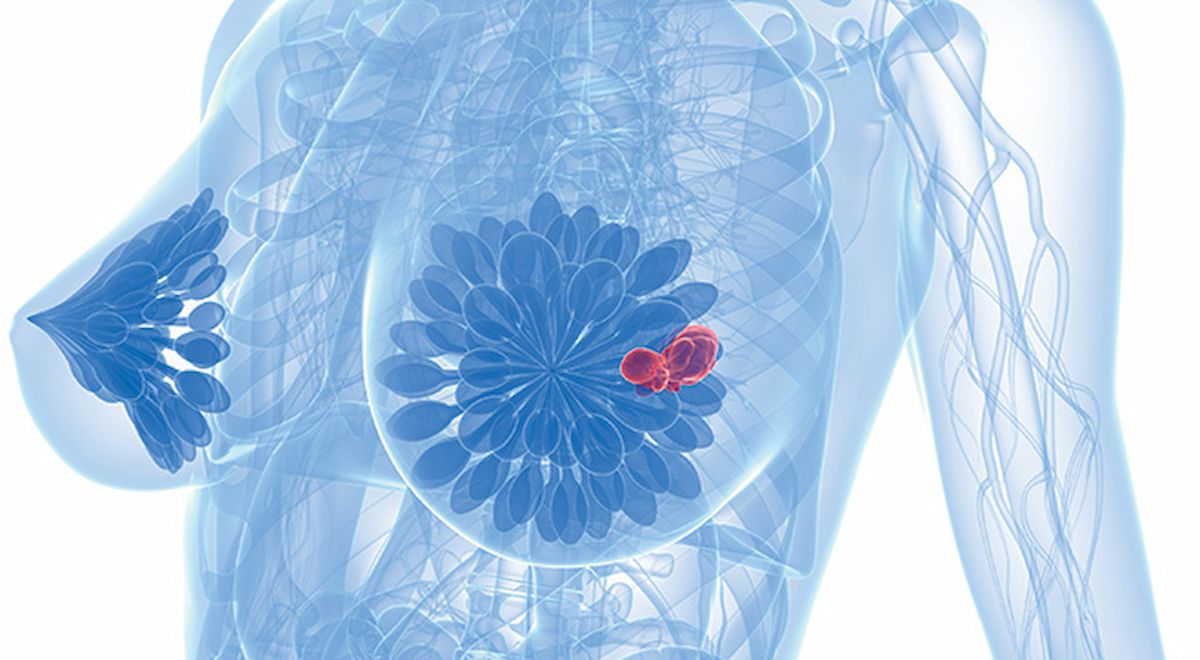Frontline T-DXd Combo Elicits Meaningful PFS in HER2+ Advanced Breast Cancer
Data from DESTINY-Breast09 may support trastuzumab deruxtecan plus pertuzumab as a frontline standard of care in HER2-positive advanced breast cancer.
"These data suggest that the combination of T-DXd and pertuzumab may represent a new first-line standard of care for patients with metastatic HER2-positive breast cancer," according to study author Sara M. Tolaney, MD, MPH.

Combining fam-trastuzumab deruxtecan-nxki (T-DXd; Enhertu) with pertuzumab (Perjeta) as frontline therapy produced a clinically meaningful and statistically significant progression-free survival (PFS) improvement vs standard-of-care therapy among patients with HER2-positive advanced or metastatic breast cancer, according to findings from the phase 3 DESTINY-Breast09 trial (NCT04784715) presented during a news briefing at the 2025 American Society of Clinical Oncology (ASCO) Annual Meeting.1
Data showed a median PFS of 40.7 months (95% CI, 36.5-not calculable [NC]) with T-DXd plus pertuzumab vs 26.9 months (95% CI, 21.8-NC) with a taxane plus trastuzumab (Herceptin) and pertuzumab (THP; HR, 0.56; 95% CI, 0.44-0.71; P <.00001). In the T-DXd and THP arms, respectively, the PFS rates were 93.0% (95% CI, 89.9%-95.2%) vs 87.8% (95% CI, 84.0%-90.7%) at 6 months, 85.9% (95% CI, 81.9%-89.1%) vs 72.4% (95% CI, 67.4%-76.8%) at 12 months, and 70.1% (95% CI, 64.8%-74.8%) vs 52.1% (95% CI, 46.4%-52.3%) at 24 months.
As of the data cutoff of February 26, 2025, data were immature, although the criterion for PFS superiority with a stringent P value of less than 0.00043 was met for T-DXd plus pertuzumab vs THP.
“The combination of T-DXd and pertuzumab demonstrated a statistically significant and clinically meaningful improvement in PFS compared with THP,” lead study author Sara M. Tolaney, MD, MPH, chief of the Division of Breast Oncology at Dana-Farber Cancer Institute, in Boston, Massachusetts, stated during the news briefing.1 “These data suggest that the combination of T-DXd and pertuzumab may represent a new first-line standard of care for patients with metastatic HER2-positive breast cancer.”
According to Tolaney, the PFS benefit with the T-DXd regimen extended across all subgroups, which included patients regardless of de novo or recurrent disease, hormone receptor status, or PIK3CA mutation status. Additionally, the median duration of response (DOR) was 39 months with the T-DXd combination, with complete responses reported in 15.1% and 8.5% of the investigational and comparator arms, respectively. Tolaney also noted that early overall survival (OS) data highlighted a trend toward improved outcomes with T-DXd plus pertuzumab.
In the multicenter, open-label DESTINY-Breast09 study, patients with HER2-positive metastatic or advanced breast cancer were randomly assigned 1:1:1 to receive T-DXd at 5.4 mg/kg every 3 weeks plus placebo (n = 387), T-DXd plus pertuzumab (n = 383), or a taxane consisting of paclitaxel or docetaxel in combination with trastuzumab and pertuzumab (n = 387). Tolaney noted that outcomes in the T-DXd plus placebo arm would remain blinded until the time of the final PFS analysis.
The trial’s primary end point was PFS per blinded independent central review. A key secondary end point was OS. Other secondary end points included PFS per investigator evaluation, objective response rate, DOR, and safety and tolerability.
Patients 18 years and older with pathologically documented advanced or metastatic HER2-positive breast cancer, and no prior chemotherapy or HER2-targeted agents for advanced or metastatic disease, or only 1 prior line of endocrine therapy in the metastatic setting, were eligible for enrollment on the trial.2 Other requirements for study entry included having adequate organ and bone marrow function and an ECOG performance status of 0 or 1. Investigators stratified patients by whether they had de novo or recurrent disease, hormone receptor—positive or hormone receptor—negative disease, and detected or nondetected PIK3CA mutations.
The safety profile of T-DXd plus pertuzumab in the DESTINY-Breast09 trial was comparable to prior reports of each individual agent. Any-grade treatment-emergent adverse effects (TEAEs) in the T-DXd and THP arms, respectively, included nausea (71.1% vs 28.8%), diarrhea (55.9% vs 54.2%), neutropenia (48.8% vs 44.5%), and fatigue (48.3% vs 34.6%). Additionally, the most common grade 3 or higher TEAEs in each arm included neutropenia (23.9% vs 33.2%), hypokalemia (10.2% vs 1.6%), and anemia (8.4% vs 3.7%).
References
- Tolaney S, Jiang Z, Zhang Q, et al. Trastuzumab deruxtecan (T-DXd) + pertuzumab (P) vs taxane + trastuzumab + pertuzumab (THP) for first-line (1L) treatment of patients (pts) with human epidermal growth factor receptor 2–positive (HER2+) advanced/metastatic breast cancer (a/mBC): interim results from DESTINY-Breast09. J Clin Oncol. 2025;43(suppl 17):LBA1008.
- Trastuzumab deruxtecan (T-DXd) with or without pertuzumab versus taxane, trastuzumab and pertuzumab in HER2-positive metastatic breast cancer (DESTINY-Breast09). ClinicalTrials.gov. Updated May 6, 2025. Accessed May 31, 2025. https://tinyurl.com/vrjtx822